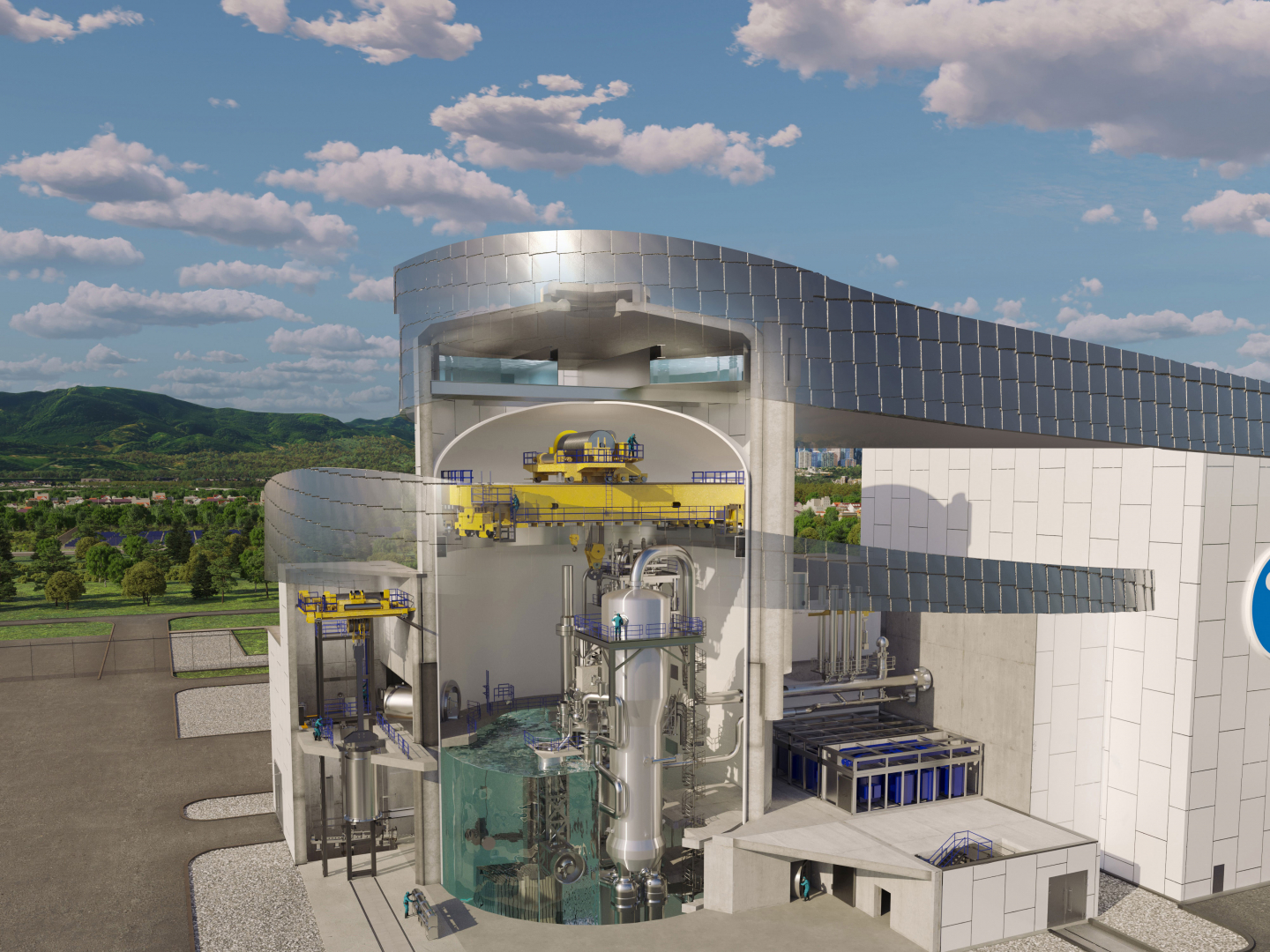It’s been a big year for nuclear energy in the U.S. The Department of Energy has allocated a large amount of capital to nuclear energy research and has committed $900 million to advance Gen III+ (more on them below) small modular reactors (SMRs). The Inflation Reduction Act’s inclusion of nuclear energy has opened opportunities for tax credits for investors in nuclear projects. Southern Company’s Vogtle plant’s second new reactor started sending power to the grid in April.
Most recently, on September 20, Microsoft and Constellation announced that they will reopen a reactor at Constellation’s Three Mile Island nuclear energy center in Pennsylvania to power Microsoft data centers. Microsoft agreed to pay $16 billion to restart the Unit 1 reactor which has a capacity of 835 megawatts. It was shut down in 2019 under financial pressure from growing competition with cheap natural gas. (The Unit 2 reactor was destroyed in 1979 accident and is undergoing decommissioning; however, the U.S. Nuclear Regulatory Commission (USNRC) noted there were no deaths or accidents, or discernible health effects from some small radioactive releases.) Microsoft has agreed to buy up to 100% of the electricity produced by Unit 1. This is part of the tech giant’s efforts to secure enough reliable, low-carbon electricity to supply its energy-thirsty data centers powering the boom in artificial intelligence.
An Overview of Nuclear Energy
For many years, nuclear energy existed in the shadows of failed projects and safety concerns. While solar and wind flourished and fossil fuels remained a standby, the nuclear power industry has made huge strides in increasing safety, commercial feasibility, and attractiveness of nuclear as a carbon-free, reliable, baseload power source. It’s no surprise that Microsoft is now making headlines as it secures nuclear power to fuel its growing AI demand.
The 2000+ page Sixth Assessment Report (AR6) on the mitigation of climate change by the Intergovernmental Panel on Climate Change notes that nuclear energy capacity must nearly double by 2050 in order to keep the global temperature rise below 1.5°C. Nuclear power provides carbon-free baseload power without the intermittency inherent in wind and solar power. This report was published in 2022 and since then we have witnessed the growth of AI and its insatiable energy needs. AI is putting at risk all the net-zero commitments made by the big tech companies. This makes nuclear energy even more important.
Yet, as pointed out by the Nuclear Innovation Alliance, the 42-page AR6 Synthesis Report’s Summary for Policymakers only mention nuclear once and “that single mention is squeezed within a densely populated table that in no way acknowledges its importance for greenhouse gas reduction.” The reason for this is that some of the countries that determine what is in the summary decided to downplay the important role of nuclear energy, an omission that was opposed by the U.S.
This ambivalence about nuclear energy is not surprising, but attitudes are changing. A 2024 survey by Pew Research Center found that 56% of Americans favor more nuclear power plants to generate electricity (compared to 78% for solar and 72% for wind). Judi Greenwald, the Executive Director of the Nuclear Innovation Alliance, has recently written about how environmentalists have changed from an anti-nuclear to a pro-nuclear position over the past 40 years as they have come to better understand its benefits and realize the risks are extremely small and easily mitigated. In this short video Nick Loris of the center-right climate think take C3 Solutions explains that the perceived risks are much less than the actual ones.
Last year ClearPath, another center-right climate think tank, published a report based on a survey it did with a group of center-right and center-left organizations. The survey covered 13,500 respondents in eight countries: France, Germany, Japan, Poland, Sweden, South Korea, the UK, and the U.S. On average there were five supporters for every opponent, with the range of support across countries being 65-92%. Respondents saw the benefits and were not put off by issues of cost, safety, and waste. Environmentalists support nuclear, support exists across the political spectrum, and the young are particularly receptive,
Support could be even greater with a better understanding of nuclear energy. In particular, an understanding of small modular reactors (SMRs) since this is the nuclear technology that can best deliver on the need for nuclear energy. As defined by the International Atomic Energy Industry (IAEI), SMRs are advanced nuclear reactors that have a power capacity of up to 300 MW(e) per unit, which is about one-third of the generating capacity of traditional nuclear power reactors.” SMRs are faster (3-4 years vs. 10) and cheaper (about half the cost per megawatt hour) to build due to a factory-controlled manufacturing environment, have a much smaller emergency planning zone (40 acres vs. a 10-mile radius), and are safer than traditional nuclear (which, properly managed, is very safe).
For some basic background on SMRs see this video discussion of SMRs by U.S. Department of Energy Principal Deputy Assistant Secretary Ed McGinnis, tutorials by ClearPath, and a video by the IAEA on the safety and security of SMRs. It is also worth noting that the European Commission supports SMRs. “The Commission recognises the potential contribution of Small Modular Reactors to achieving the energy and climate objectives of the EU Green Deal, as reflected in its recommendation for the 2040 emission reduction targets.”
According to the World Nuclear Association today there are around 440 commercial nuclear reactors supplying 9% of the world’s electricity and one-quarter of the world’s low- carbon energy, with 64 reactors under construction globally. These are conventional nuclear designs and not small modular reactors where approximately 70% of their designs are based on pressurized water reactors and the remaining are based on boiling water reactors and heavy water reactors.
These two technologies are also used for SMRs. Here is a brief review of each design.
Pressurized Water Reactors (PWRs)
Nuclear fission produces heat inside the reactor. That heat is transferred to water circulating around the uranium fuel in the first of three separate water systems. The water is heated to extremely high temperatures but doesn’t boil because the water is under pressure. The water within the primary system passes over the reactor core to act as a moderator and coolant but does not flow to the turbine. It is contained in a pressurized piping loop. The hot, pressurized water passes through a series of tubes inside the steam generator.
These tubes are surrounded by another water system called the secondary or steam generating system. The heat, but not the water, from the primary coolant is transferred to the secondary, system which then turns into steam. The primary and secondary systems are closed systems. This means the water flowing through the reactor remains separate and does not mix with water from the other systems. The steam is pumped from the containment building into the turbine building to push the giant blades of the turbine. The turbine is connected to an electrical generator.
After turning the turbines, the steam is cooled by passing it over tubes carrying a third water system called the condenser coolant. As the steam is cooled, it condenses back into water and is returned to the steam generator to be used again and again.
PWR technology brings the advantage of using similar fuel to what is used in the global fleet of conventional commercial reactors of Low Enriched Uranium (LEU) which has less than 5% enrichment. (More on this below.) Also, these designs are very stable due to their tendency to produce less power as temperatures increase. In these designs, a leak of radioactive nuclides in the core would not transfer any radioactive contaminants to the turbine and the condenser. One of the disadvantages is their lack of commercial deployment.
U.S. SMR companies using PWR technology include:
For more detail on PWRs see this explanation by ScienceDirect.
SUBSCRIBE TO OUR NEWSLETTER
Subscribe our newsletter to receive the latest news, articles and exclusive podcasts every week



